Rembrandt is perhaps undoubtedly the greatest artist of the Dutch Golden age. He left a substantial and exceptional collection of artwork, much of which can be seen at the Rembrandt House Museum.
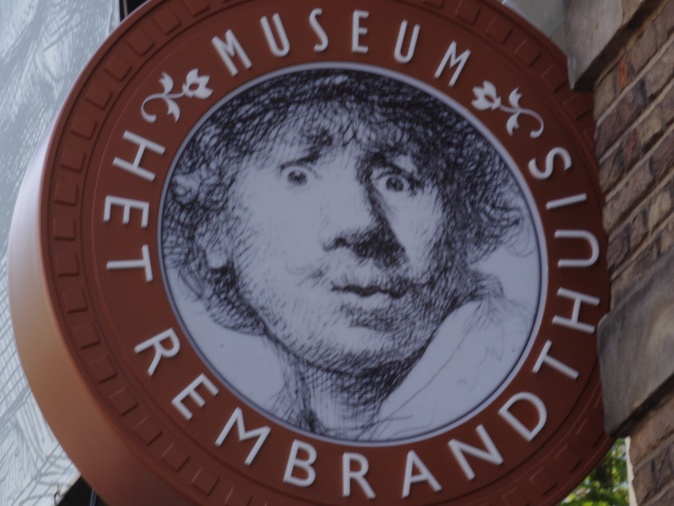
Rembrandt lived in the house at Jodenbreestraat 4 in Amsterdam between 1639 and 1658. This large house built in 1606 cost him 13,000 guilders which would be the equivalent of €150,000 today. Rembrandt was a famous artist at that time and was earning good money. He agreed to pay for the house in instalments but did not keep up the repayments. These financial problems led to his bankruptcy in 1656. Two years later, the creditors sold his house and all his possessions at an auction. After the sale, Rembrandt moved to a smaller rented house on Rozengracht 184 where he lived until he died in 1669.
The inventory of Rembrandt’s possessions which was made for the auction was not destroyed. This list details his furniture, paintings, prints, drawings, statues, weapons and other objects. It was used as the basis for replicating the interior of the house together with some of Rembrandt’s sketches and paintings.
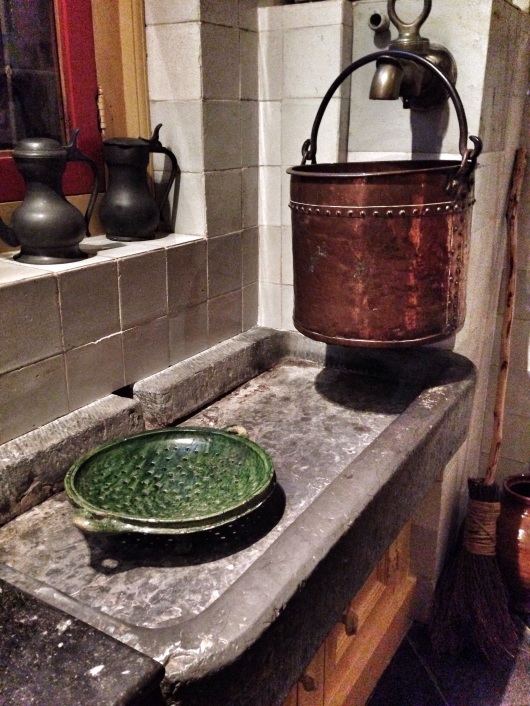
Kitchen
The kitchen was a warm comfortable room which also served as a dining room. A door in the kitchen leads into the small courtyard which contained an outdoor toilet. The kitchen also contained a box bed for the maid.

Entrance Hall
The front door at street level leads into the entrance hall for the house. This hall contained many paintings which Rembrandt was selling. Some of the work was his own but he also sold work from other painters.
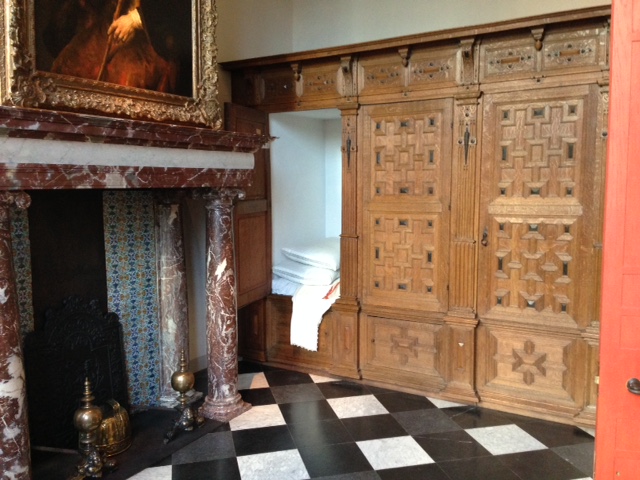
Living Room
A door from the entrance hall leads into the reception room. This elegant room was where Rembrandt carried out his art dealing business. The walls contained dozens of paintings from which customers could choose. He sold his own paintings works year and those of his pupils. The pillars on the fireplace are marble. The plinth appears to be marble but was actually was painted so that it looked like marble.
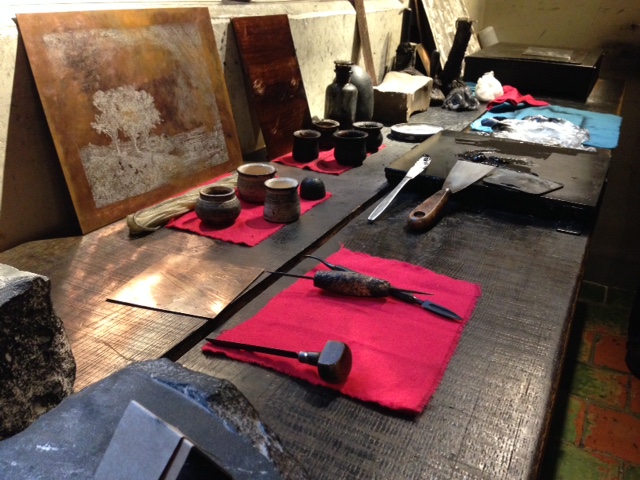
Rembrandt was an innovative artist and developed techniques for etching using copper plates. From these copper plates, he would create prints. The copperplate would be placed onto a wooden press and moist paper would be laid on top. after pressing the paper the paper would be hanged on a line to dry. Staff at the museum give free demonstrations of the etching and printing process.

Studio
There was a large studio in the house where Rembrandt painted his masterpieces between 1639 and 1658. The room was facing north which provided a consistent light through the windows. The position of the easel in this room can be seen in one of his drawings. Rembrandt would get his assistants to make the paint and prepare the canvases. Staff at the Rembrandt House Museum give demonstrations showing how the oil paint was made. They also explain how all the materials for making the paint were sourced.
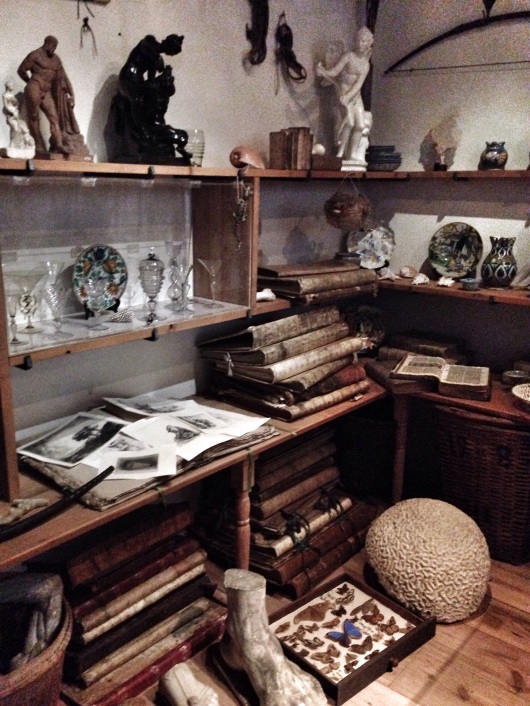
Store Room
Next to the studio, Rembrandt had a room in which he kept many rare objects from other countries. He also kept albums of artwork there containing around 8000 prints in total.

Living Room
Rembrandt’s living room also served as his bedroom. The beds in this year there were a lot shorter than the one’s today. This is because people would sleep partly upright position to prevent a perceived danger of blood pooling in the head.
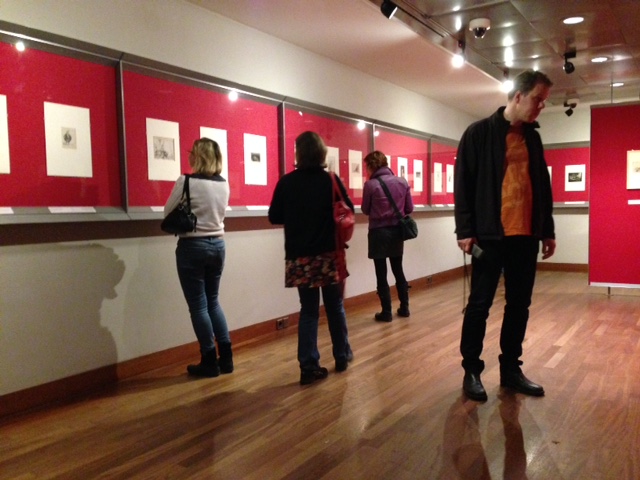
Gallery
Rembrandt was one of the greatest graphic talents of all time. His contemporaries admired the freedom of his drawing and his dramatic lighting effects experiments with etching techniques. Subsequent generations of artists have drawn inspiration and ideas from Rembrandts prints. He would often very printing process in order to generate unique prints from the same plate.
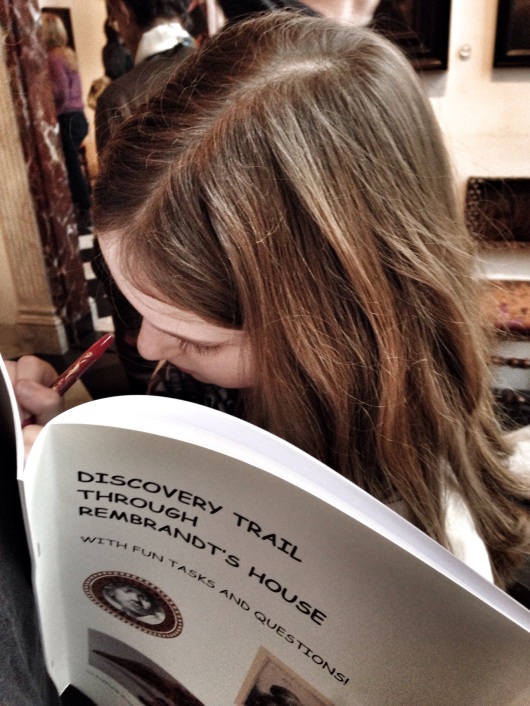
Children Discovery Trail
Rembrandt House Museum is a great place for children to learn about art and be inspired. Workbooks are available at reception for the kids to take part in a discovery trail.
location
The Rembrandt House Museum is located in the centre of Amsterdam near Waterlooplein.
Address: Jodenbreestraat 4, 1011 NK Amsterdam
photo tips
Like many museums, the lighting is quite dim in most of the rooms. Increase your ISO as high as possible and if necessary increase your aperture.
Most of these photos were taken with an iPhone and enhanced using the Snapseed App.
Tripods are allowed but permission is required.
Small camera bags are allowed to be carried through the rooms but larger backpacks are not allowed.
sights nearby
Blauwbrug
Moses and Aaron Church
Waterlooplein
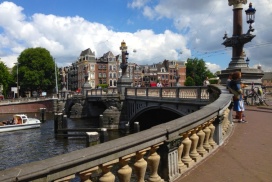
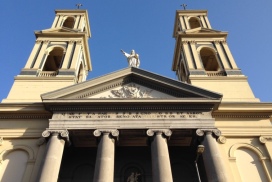
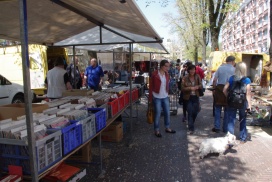
I’m curious about the fundraising effort in 1972 or ‘74 selling 300 red tiles called “Saskia Tiles” discovered in the cellar of Rembrandt’s house on Jodenbreestraat for $100 each. I found an issue of the Holland Herald magazine (Volume 9 Number 7) in my childhood Pan Am travel files. It was part of “an all-out campaign to raise cash for restoration work”. The house was in danger of falling down from heavy traffic on the street & the neighboring building was being demolished for an office block. Selling the tiles was the first step in fundraising along with symbolically selling 30 new wooden pilings at $2,000 each (donors were supposed to be marked by a plaque outside the building). The Chairman for the foundation, K.G. Boon is the final quote of the article “If the building isn’t provided with new foundations before demolition work starts on the adjacent building, it could easily cave in. Even now new cracks appear in the walls daily.” I was only 14 years old at the time and didn’t have $100, but wonder how many sold, if one is on display in the museum (& how much they’re worth today!)